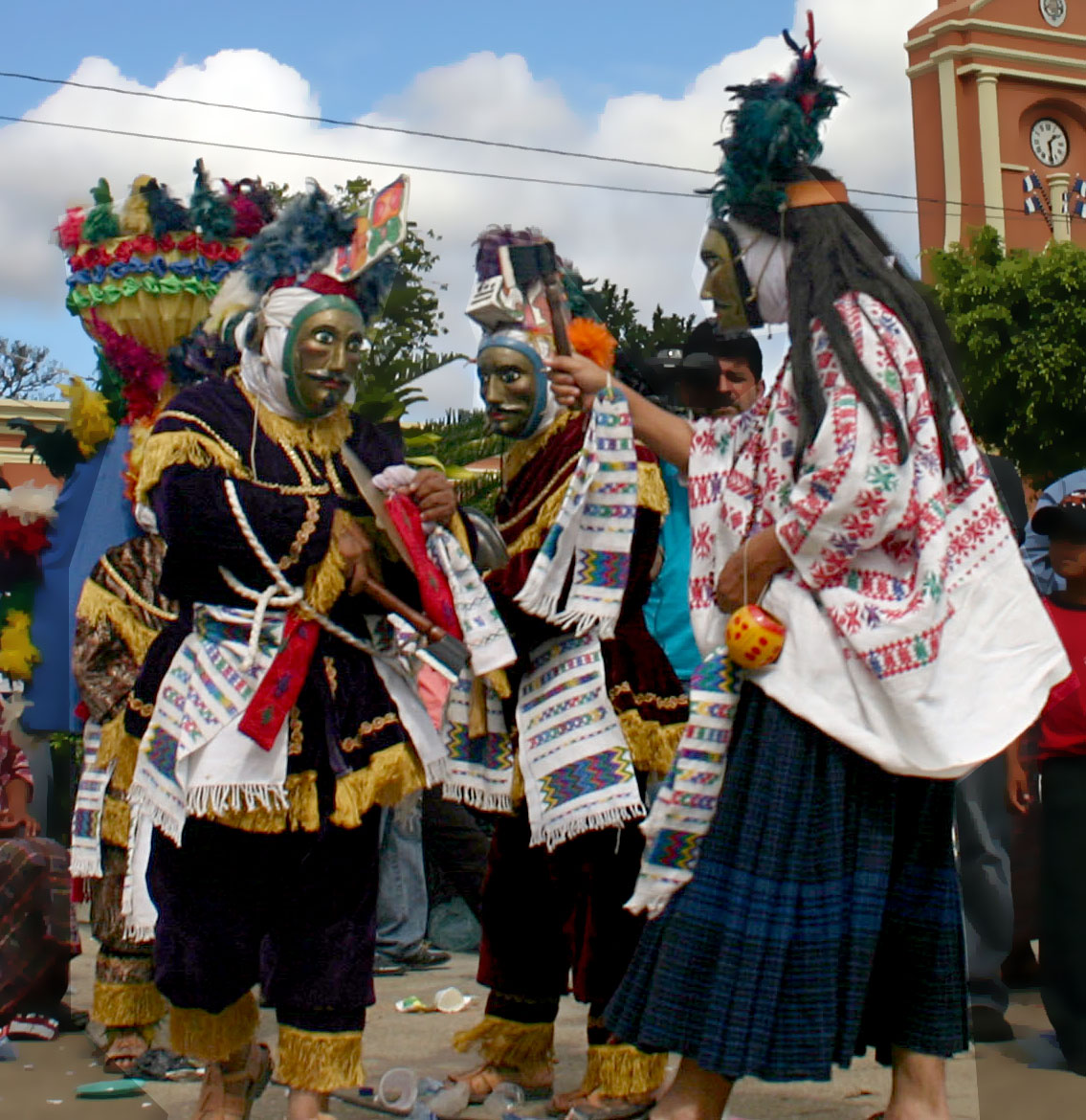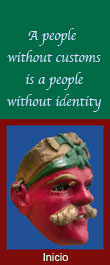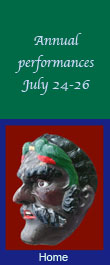Maya Ritual Dance: Past and Present
Prehispanic Public Ritual Dance
Dance has been absolutely central to Maya public rituals for millennia. Thousands of sculptures, mural paintingss, figurines and painted ceramic vases from the classic period in the Petén and Yucatán depict dancers. Even the figures of rulers that dominate the classic stela format, show them in dance regalia.
At least four types of public ritual dance are known from the pre-Hispanic period, all of which continued in modified form under colonization: 
- Dances of nobles in their most elaborate regalia of fine textiles, feathers and jade, known in the colonial period as Tocontin; [Bonampak and motul vases],
- Dances featuring animals and primordial humans (wayob), still performed in modified form in Maya communities, such as the dances of the Deer and the Monkeys
- Dances enacting the origin and ordering of the world, such as the one transcribed in the central portion of the Popol Vuj (Bonampak group), for which the missionaries attempted to substitue biblical stories
- Dances retelling a political conflict in which a prisoner of war is tried and sacrificed (motul arraignment), referred to in the colonial period as Bailes del Tun, such as the 15h century Rabinal Achi that is still performed intact.
Dances introduced by Spanish Colonizers
The missionaries who brought catholicism to Highland Maya communities, particularly the Franciscans and Dominicans, understood that important religious concepts and values were effectively communicated through dance drama, and thus devoted considerable effort toward altering the character of Maya public ritual dance. Among other innovations, they adapted biblical dramas including writing versions in local Maya languages.
Missionaries also imported European dance dramas like the Dance of the Moors and Christians. This dance drama resonated with the character of both Maya origin and historical dances in that it enacts the origin of catholic society through a war with pagans in which the leader dies and the rest are converted. This drama was adapted to New World venues as a means of encouraging Indigenous peoples to convert to Catholicism.
From the Dance of Moors and Christians were developed Dances of the Conquest in which the story was told by substituting the local Indigenous group for the Moors. Like the dances of Moors and Christians, they could be staged as grand pageants involving hundreds or thousands of participants that included community leaders and celebrated political events like Spanish victories or landmarks in the Spanish royal house. One of these, celebrating the defeat of the Kaqchikel rebel ruler Sinacam Kahi Imox, was performed several times in the old capital (Antigua Guatemala) in the late 17th century.
Dances of the conquest could also be smaller-scale ritual offerings performed by dance teams. Among these, the Dance of the Conquest of Quetzaltenango is the most widespread, familiar, and regularly performed, especially among K’iche’ people whose history it specifically retells. This historical drama is particularly pertinent to San Cristóbal Totonicapán, located in the precise area in which these transformational events took place.
Contemporary Ritual Dances
Ritual dances offered during the feria in honour of the patron saint remain an important institution within costumbre, the Maya-Catholic religion. Many municpios support multiple dance teams, each devoted to a particular dance such as the Dance of the Conquest, the Dance of the Deer, the Dance of the Mexicans, The Dance of the Bull, or the Dance of the Monkeys.


